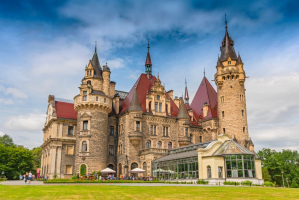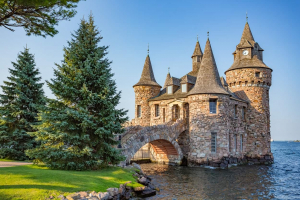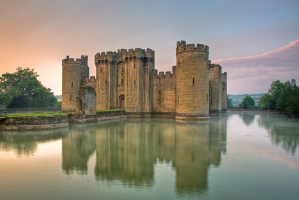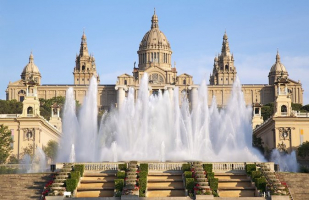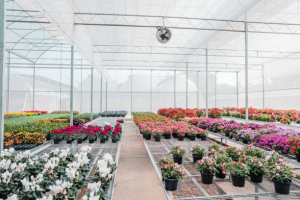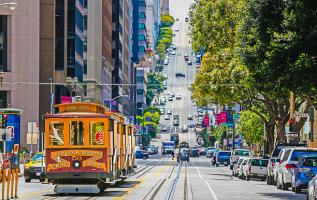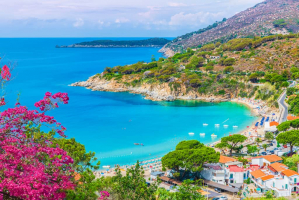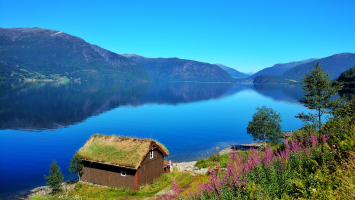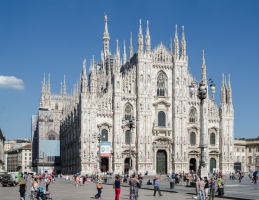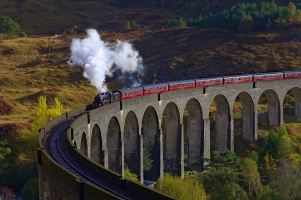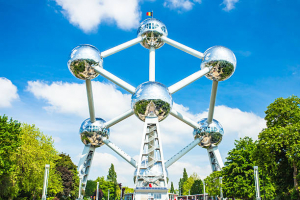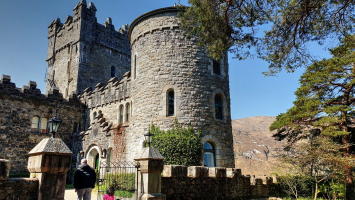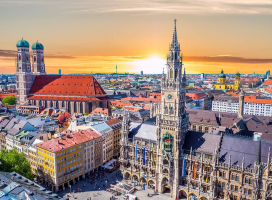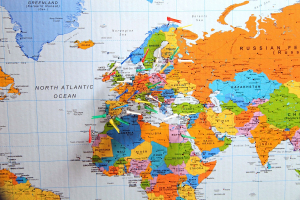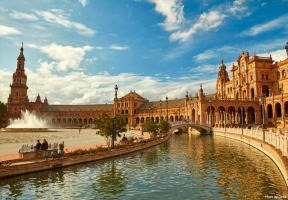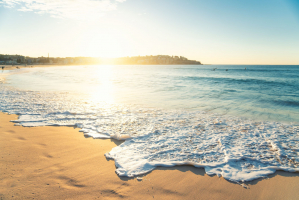Top 15 Most Beautiful Castles in Europe
Europe may be the best region on earth for viewing breathtaking castles. Everywhere from the Bavarian Alps to the Mediterranean coast, you may find old stone ... read more...walls, tall towers, and bridges that arch over sparkling moats. See the most beautiful castles in Europe on this list, and prepare to feel like the actual monarch you are.
-
Together with locations like the Eiffel Tower and the Palace of Versailles, Mount Saint Michel truly serves as a representation of France. One of the most famous locations in the area is Mount Saint-Michel, which is perched on France's northern shore. It is also unquestionably one of the best castles in all of Europe.
Yet, you don't fully appreciate the depth of what is here until you visit Mount Saint Michel and examine the nuances of the island and its surroundings. The crowning achievement is the Mont Saint Michel Abbey itself. The first sanctuary was constructed here in the eighth century, and today it is a vast complex of magnificent rooms that sits atop the mountain.
It takes hours to adequately examine it and understand the various construction stages that combined religious piety with fortifications and more practical uses. Take the free shuttle bus over to the castle itself early in the morning when there are fewer crowds, but if you're simply looking for a wonderful photo opportunity, just take a stroll and start snapping away. It's a beautiful area, especially after traveling through more of northern France.
Location: Normandy, France
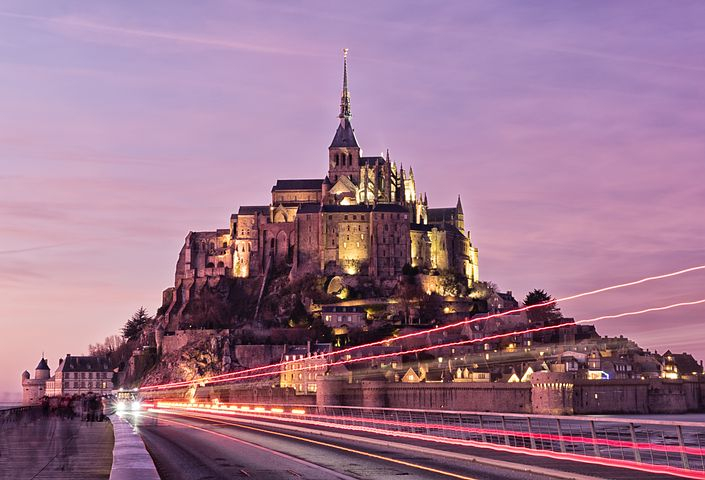
Photo by mont-saint-michel on Pixabay 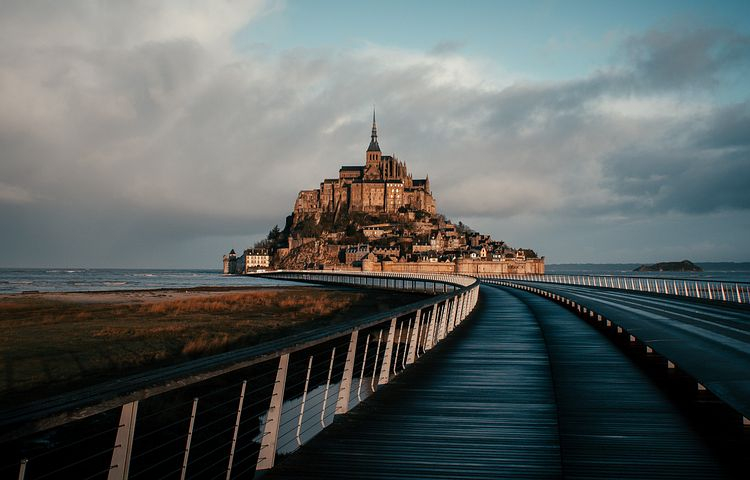
Photo by hd wallpaper on Pixabay -
Sintra's Pena Palace, the palace's exterior is a fusion of several architectural types. Disney could only dream of anything like Pena Palace. It is both one of the most magnificent palaces in the entire globe and one of the most unique buildings in all of Europe. It was constructed in 1840 over an existing monastery and resembles a fairytale castle. The old monastery was merged into the new structure (including a 16th-century chapel with a marble and alabaster altarpiece, and a Manueline cloister with decorative tiles from 1520).
It is a dream palace that blends elements of the Gothic, Manueline, Moorish, and Renaissance styles, making it one of the best representations of European Romanticism. It is situated at the summit of a mountain. The inside is heavily ornamented with European furniture and oriental china, and there are watchtowers of various shapes. One of the entrances is crowned by the half-man, half-fish Triton. Large cooking items used to make the royal dinners are on display in the kitchen.
Pena is sometimes likened to the Bavarian castles of Germany, but it actually predates Neuschwanstein by two decades and is regarded as the earliest Romantic palace in Europe. Pena is as emblematic of Portugal as Neuschwanstein is to Germany. It was conceived by King Ferdinand, who also gave the order for Pena Park to be planted beneath it.Location: municipality of Sintra, on the Portuguese Riviera
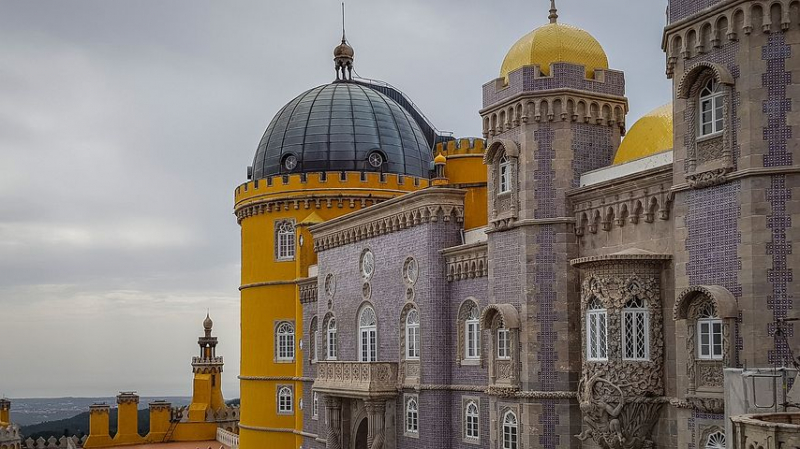
Photo by Walkerssk on Pixabay Video National Geographic by National Geographic -
The oldest and biggest inhabited castle in the world is Windsor Castle. It has served as the royal residence of the British monarchy for for a thousand years. Her Majesty The Queen calls it home and spends the majority of her private weekends there. When the Queen is in residence, the Round Tower flies the Queen's standard. Windsor is still a very active royal residence. The castle is frequently utilized for official ceremonies and other celebrations. The Queen frequently hosts state visits from foreign kings and presidents here. When a single table is decked with china and silver gilt from the Royal Collection and seats 160 guests, Saint George's Hall offers an impressive setting for a state supper.
Hugh Roberts, an early 20th century art historian, called the opulent state suites in the castle's early 19th century "a beautiful and unequaled sequence of rooms largely recognized as the finest and most comprehensive embodiment of later Georgian taste." The 15th-century St. George's Chapel is located inside the castle walls and is regarded by historian John Martin Robinson as "one of the supreme achievements of English Perpendicular Gothic" architecture.Location: Berkshire, England
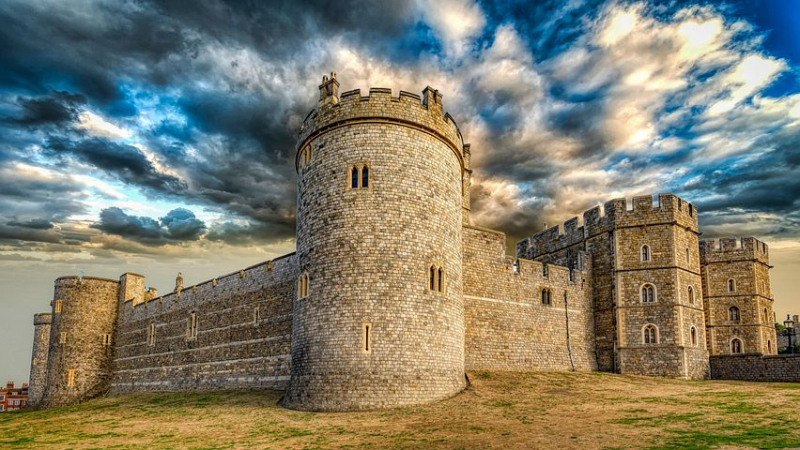
Photo by Mike_68 on Pixabay 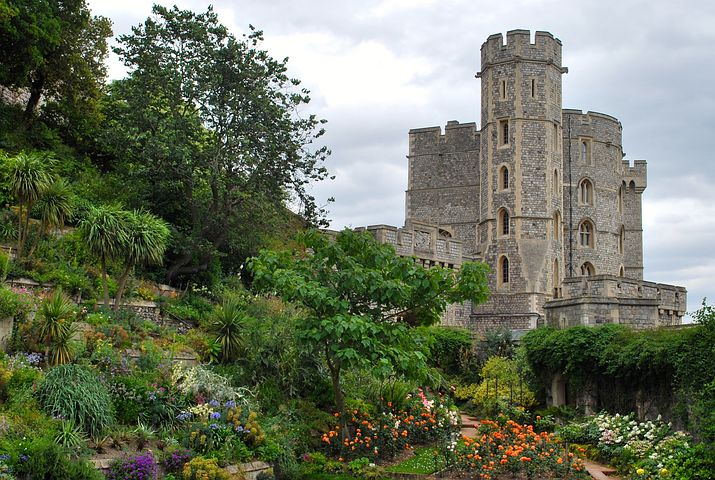
Photo by Maribettiniblank on Pixabay -
Semur-en-Auxois Castle is located in the same-named French town in the Côte-d'Or region. Although though the castle was constructed more than 700 years ago, it is still worthwhile to see some of the noteworthy locations within the commune. See the spectacular Tour de l'Orle d'Or, which is still over 40 meters high, as well as the Tour de la Prison.
In a bend of the Armançon river, Semur-en-Auxois was established around a rocky ridge. As least as early as the tenth century, the location was already fortified. Robert II, Duke of Burgundy, granted town privileges to the settlement in 1276, making it the seat of the bailiwick of Auxois. Then, Semur-en-Auxois Castle was constructed to take the place of an earlier defense.
It was constructed on the meander's narrowest point, thus enclosing the rest of the ridge. The north tower served as the keep, and it was constructed with a rectangle form and four round corner towers. This keep is roughly 40 meters tall, with a base wall thickness of 5 meters. The style of French military architecture from that era, known as "Philippian" after Philippe Auguste (Philip II of France), a cousin of the Duke, is supposed to have served as an inspiration for its design. "Le Donjon" was the only name given to the castle.
Location: Semur-en-Auxois, Côte-d'Or, France
Video by France 3 Bourgogne-Franche-Comté on Youtube Video by Harry Mateman on Youtube -
Peles Castle is a masterpiece of German new-renaissance architecture and is regarded by many as one of the most beautiful castles in all of Europe. It is located in the lovely town of Sinaia, at the foot of the Bucegi Mountains.
One of the best recent castles in Europe is this Romanian neo-renaissance structure. The castle was built in 1883 after being ordered by King Carol I in 1873, and it housed the royal family there until 1947. The finest works of European art, Murano crystal chandeliers, German stained-glass windows, and walls upholstered in Cordoba leather grace its 160 rooms. A distinctive collection of Tiffany and Lalique glassware and nineteenth-century Viennese furniture may be found in each of Pelisor's 70 rooms.
The castle can easily be visited in a single day since it is just about 50 miles from Bucharest, the country's capital. Don't forget to check out the inner court's murals as well. Sinaia Monastery, established in 1695 by Prince Mihai Cantacuzino and named after the illustrious Sinai Monastery on Mount Sinai, is another noteworthy attraction in the city. The monastery, which today houses a monastic foundation, was the royal family's dwelling prior to the construction of Peles Castle.
Location: Sinaia, Wallachia, Southern Romania
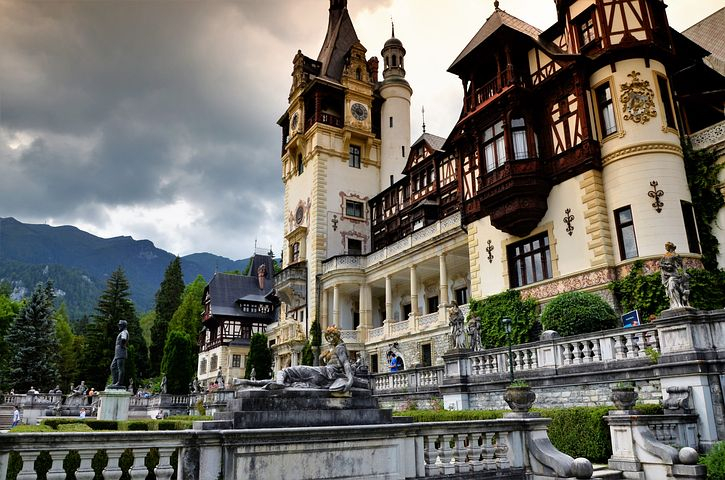
Photo by Gavia26210 on Pixabay 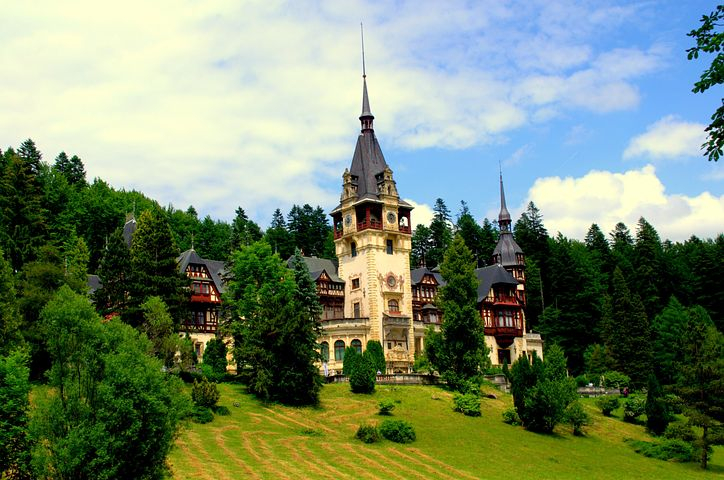
Photo by Giullie on Pixabay -
One of the most recognizable castles in Scotland, Eilean Donan Castle is undoubtedly featured on the most shortbread tins and calendars. It is without a doubt a Scottish landmark and unquestionably one of the Highlands' most visited tourist destinations. It is simple to understand why so many people return year after year to its strong doors when you first lay eyes on it. The environment of Eilean Donan is absolutely stunning. It is strategically situated on its own tiny island, overlooking the Island of Skye, at the place where three large sea lochs converge, and it is encircled by the majestic splendor of the forested mountains of Kintail.
Visitors enter the spacious parking lot and go to the bright, contemporary visitor center, which includes the ticket office, gift shop, and restaurant. The Conchra Charitable Trust, which was founded in the 1980s by the MacRae family, the castle's owners, and whose main function is to preserve the structure and its artifacts for the country and future generations, runs the entire operation.
The majority of the castle's magnificent interior halls are now open for visitors to explore while admiring Jacobean artifacts, period furnishings, exhibitions of weapons, and works of fine art. There is a richness of historical legacy and intrigue, and knowledgeable tour guides are eager to impart their vast expertise. Wedding ceremonies can even be planned inside the elegant Banqueting Hall for those who are feeling particularly sentimental.
Location: western Highlands, Scotland, the UK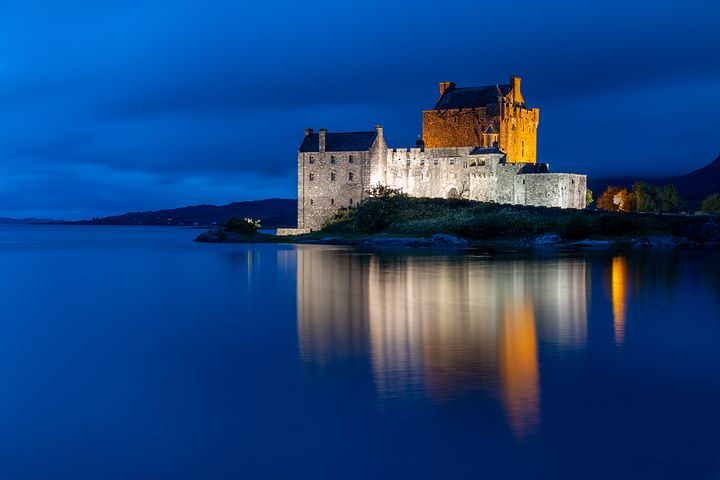
Photo by Rzierik on Pixabay 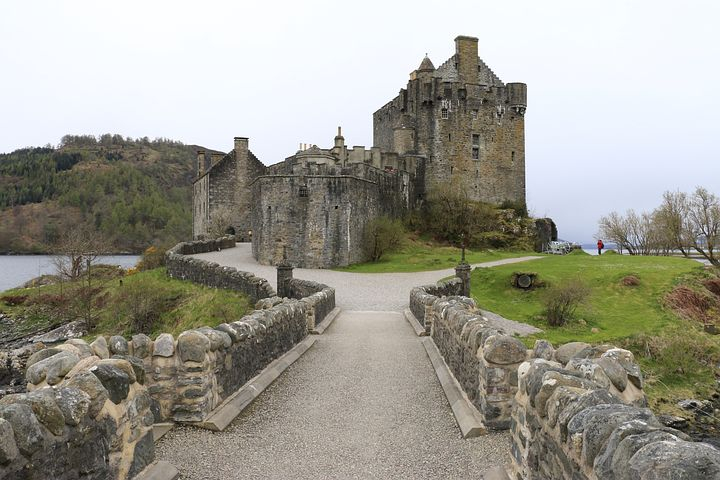
Photo by Barni1 on Pixabay -
The Prussian King and Princes of Hohenzollern's ancestral home, Hohenzollern Castle, is boldly perched about 900 meters above the Swabian Jura and is guarded with towers and battlements.
King Frederick William IV of Prussia was a bit of a Romanticist on the throne who loved the fine arts and had a lyrically romantic affinity to the Middle Ages. And that's probably why he hired Friedrich August Stüler, one of Berlin's most prominent architects at the time, to rebuild the castle's ruins. Even though it was a little behind the times, he realized the idealized picture of a medieval knight's castle, which is still breathtaking and overwhelmingly beautiful today.
The reconstruction project's cornerstone was set in 1852, and it was completely finished in 1867. The castle includes 140 rooms in all, with the King's bed chamber, the family tree room, the library, and the Queen's room, also known as the Blue Salon, among its highlights. With its gilded coffered ceiling, gorgeous marquetry flooring, and paintings of Prussian royals, the interior decor is exquisite. Also, the castle's own brewery produces its own beer called PREUSSENS for those who aren't too concerned with monarchy beliefs.
Location: Burg Hohenzollern, Germany
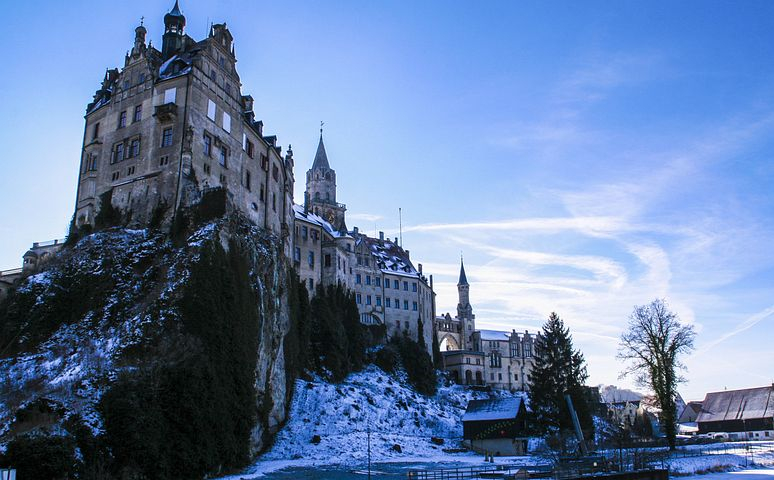
Photo by Tommy_rau on Pixabay 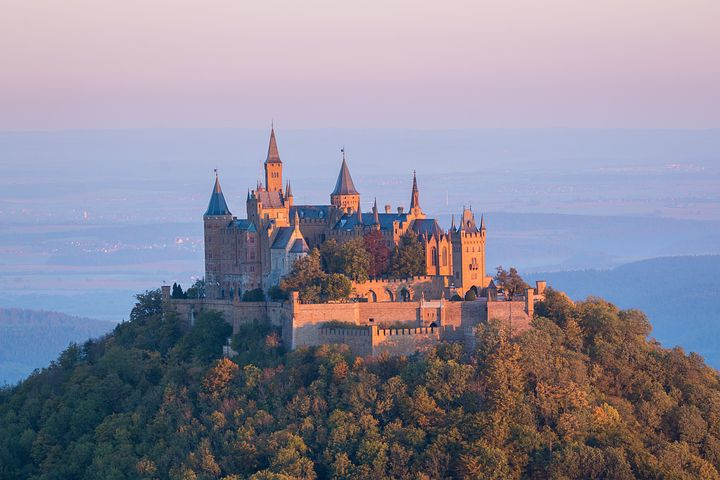
Photo by jonathansautter on Pixabay -
Corvin Castle, also known as Hunyadi Castle or Hunedoara Castle, is a Gothic-Renaissance castle in Hunedoara, Romania. It is one of the most beautiful castles in Europe and is featured as one of the Seven Wonders of Romania.
Corvin Castle, a key site in Romania, was constructed in the late Middle Ages in the Gothic Renaissance architectural style. The Knight's Hall, Diet Hall, and the spiral staircase are the three main spaces in the castle. The rectangular halls are marble-decorated and have a rectangle shape. While feasts were held in the Knight's Hall, ceremonies and formal celebrations took place in the Diet Hall. John Hunyadi died in 1456, which caused the castle project to stall.
The castle has undergone numerous renovations. It also experienced numerous fires that caused major damage after being abandoned for a protracted length of time. The Matia Wing of the castle was being built beginning in 1458 thanks to fresh commissions. The castle's construction was ended entirely in 1480, at which point it was acknowledged as one of the biggest and most spectacular structures in Eastern Europe. The castle has frequently appeared in movies, video games, and TV shows because of its striking Gothic aspect.
Location: Hunedoara, Romania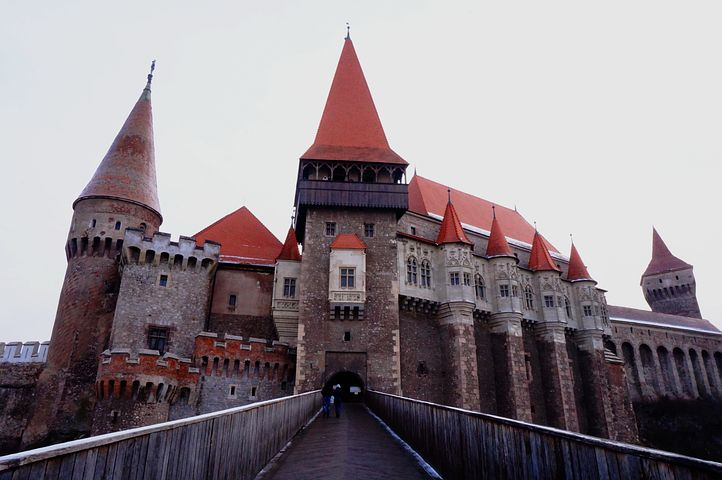
Photo by Carinachen on Pixabay 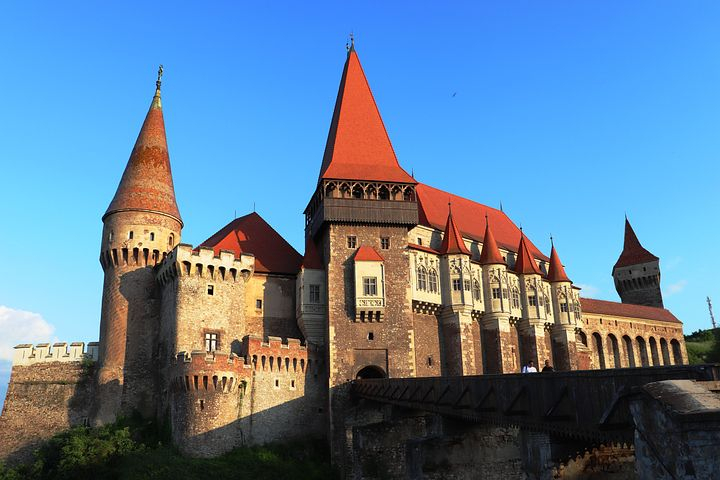
Photo by Mary1826 on Pixabay -
De Haar Castle is one of the must-see attractions in the Dutch province of Utrecht. The castle, which is the biggest in Holland, is only a 30-minute drive from Amsterdam. The castle, which has a medieval appearance, was constructed over the remains of an earlier castle between the late 19th and early 20th centuries.
You can enter a another world when you visit De Haar Castle, whether it's for a wedding or to take in the park, its rich history, the exhibitions, gardens, and animals. Every entrance, feature, and flower in its vibrant gardens has a tale hidden behind it. A tale featuring intriguing characters, historical events, and several cultures. The largest castle in the Netherlands is called De Haar. It used to be the private home of the Van Zuylen family, whose descendants still visit every year. From Coco Chanel to Roger Moore, members of the international jet set frequently stayed at the castle throughout the previous century, leaving their stamp on the luxurious apartments of the most opulent location in Utrecht.
There are significant wood carvings all over the rooms. The Rothschild family restored the castle, and their works may be found all across the grounds.Location: Utrecht, Netherlands
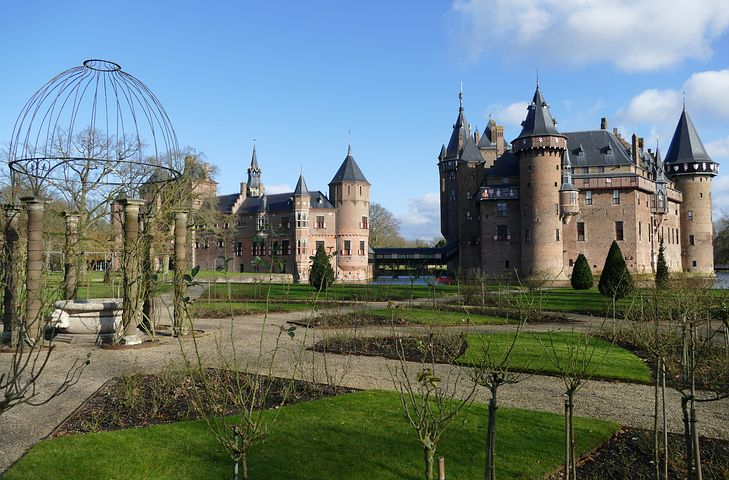
Photo by MrsBrown on Pixabay 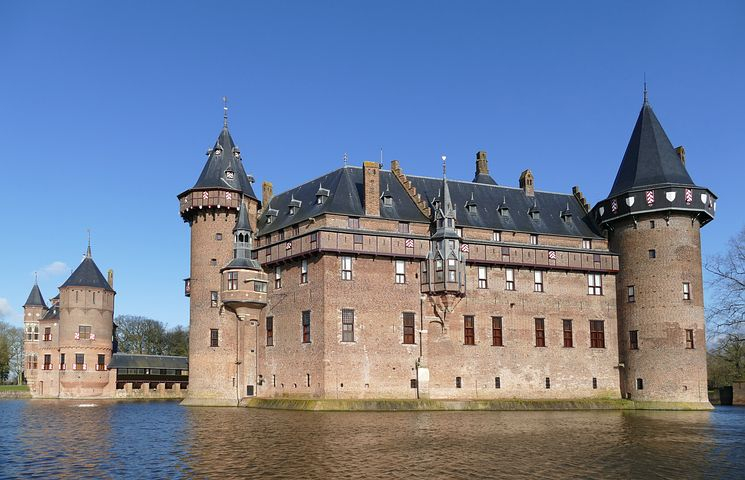
Photo by MrsBrown on Pixabay -
Don Alonso de Fonseca, the Archbishop of Seville, gave the order to build the Castillo de Coca in 1453, with King Juan II of Castile's approval. It was designated a National Historical Monument in 1928.
The castle was built in the Gothic-Mudejar architectural style and is regarded as one of Spain's finest examples of it. Brick is a material that is used both for construction and as a decorative feature. Its rooms are particularly exquisite and have lovely Mudejar themes in the painting and stucco.
While it was customary to construct castles on top of hills, the fact that the castle, which has its Tower of Homage in front, is situated on a hill is rare. In this instance, a meander created by the Voltoya River and the surrounding escarpments was employed, on which massive moats that acted as a defense were constructed.
The castle's framework consists of two sizable enclosures. With its towers and walls, the outer enclosure served as a defensive structure. The higher interior, which had a sizable courtyard and room after room of chambers, served the same purpose. Only a few capitals and a few minor pieces of the original patio are still visible. The Torre del Homenaje, a former prison where figures like the Duke of Medina-Sidonia and Don Gaspar Alonso Pérez de Guzmán were housed, is located next to these dependencies.Location: Coca municipality, Segovia, Spain
Video by Juan Gigosos Pérez on Youtube Video by discover Europe on Youtube -
French château The Château de Chenonceau is located next to Chenonceaux, a tiny village in the Indre-et-Loire region of the Centre-Val de Loire.
The architecturally distinctive Château de Chenonceau stands above the River Cher on an arched bridge. One of the most famous chateaus in the Loire Valley is this one. Although the current chateau was built in the sixteenth century, a former estate was recorded in writing as early as the eleventh century. On the remains of an earlier mill, the current château was constructed between 1514 and 1522, and it was later expanded to bridge the river. The gallery on the bridge was constructed between 1570 and 1576 to plans by Jean Bullant, and the bridge itself was constructed between 1556 and 1559 to the specifications of French Renaissance architect Philibert de l'Orme.
The outside of the building combines aspects of Gothic and Renaissance architecture, while the interiors showcase a sizeable and exceptional collection of furniture, tapestries, and works of art. A sizable forest surrounds the chateau, and its grounds include a lovely castle park. This palace's very original architecture makes for hours of amazing exploring.Location: Indre-et-Loire,France
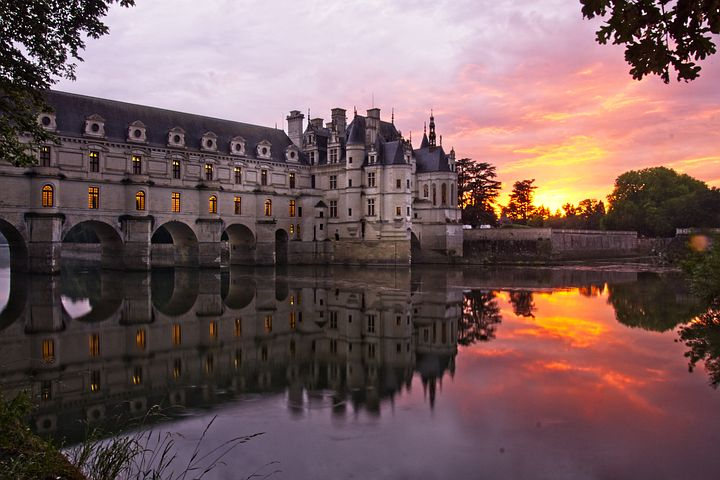
Photo by lorilorilo on Pixabay 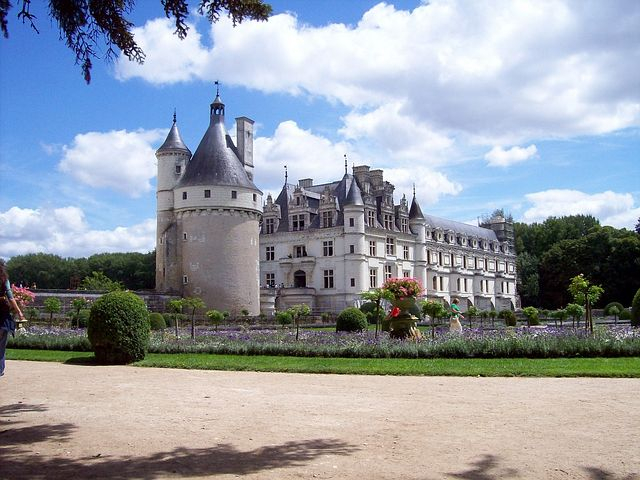
Photo by Alan on Pixabay -
For the family of affluent London doctor Mitchell Henry, whose ancestors worked in Manchester, England's textile industry, Kylemore Castle was constructed in 1868. Beginning in 1867, the castle's construction required 100 men to finish in four years.
The Kylemore Castle comprised around seventy chambers, a floor area of over 40,000 square feet, and a main wall that was two to three feet thick. The 142-foot-wide facade is constructed of limestone from Ballinasloe and granite that was transported by sea from Dalkey to Letterfrack. There were different offices and domestic staff houses for the butler, chef, housekeeper, and other servants, as well as 33 bedrooms, 4 bathrooms, 4 sitting rooms, a ballroom, a billiards room, a library, a study, a school room, a smoking room, and a gun room. A Gothic church and a family mausoleum housing the remains of Margaret Henry, Mitchell Henry, and John Henry, a great-grandnephew, are among the further structures.
Be sure to also stop by the Victorian Gardens. The Abbey is accessible through a shuttle bus that departs from the visitor center, and it is often open until around seven in the evening. You will have the nicest time in Ireland because there are so many breathtaking locations to see.
Location: Connemara, County Galway, Ireland
Video by Aerial Video & Photo Prod on Youtube Video by Mark's Mavic on Youtube -
The Hohensalzburg Fortress is one of the most beautiful castles in Europe and the largest preserved fortress of central Europe. The castle museum and the medieval Royal Apartments are not to be missed. Admire the breathtaking landscape of the Alps and the perspective of Salzburg's roofs.
Visitors are free to explore the Hohensalzburg Fortress at their own pace. Three museums are available for those who are interested in learning more about the fortress and the city's past. The fortress's history and the lives of those who lived there and nearby are revealed at the castle museum. Many artifacts from the renowned Salzburg Marionette Theatre are on display in the puppet museum. The Rainer Regiment Museum, which emphasizes military history, depicts the past of the old Salzburg infantry regiment.Attend a dinner concert in one of the stunning salons to learn more about the Hohensalzburg Fortress. A four-course supper is served in the opulent Golden Hall or Heraldry Hall, both of which have gothic decorations, before a performance by the Salzburg Mozart Ensemble or the Mozart Chamber Orchestra.
Location: the city of Salzburg, Austria
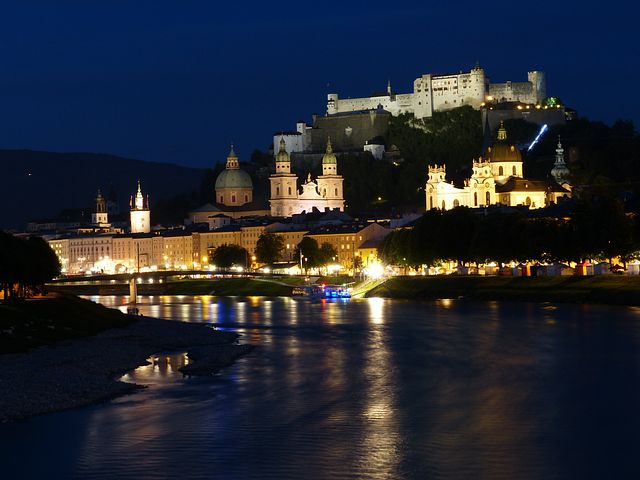
Photo by Hans on Pixabay 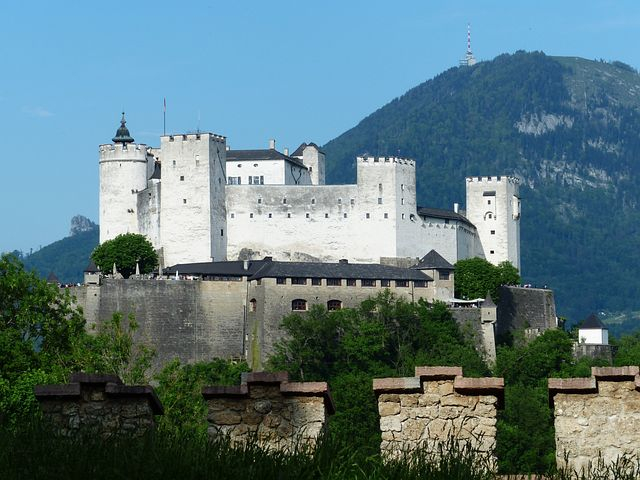
Photo by Hans on Pixabay -
The Palace of Versailles, the ideal representation of French luxury and grandeur, must be included whenever discussing European castles. King Louis XIV constructed the Palace of Versailles, a former royal home, in Versailles, which is located about 12 miles (19 km) west of Paris, France. The Public Establishment of the Palace, Museum, and National Estate of Versailles has been in charge of managing the palace since 1995. It is owned by the French Republic and is overseen by the French Minister of Culture.
The 1,977-acre estate and golden chateau from the 17th century are King Louis XIV's lasting monuments, and even French inhabitants deem them to be wonders of the world. Spend at least a full day exploring the Hall of Mirrors, the Royal Stables, and the never-endingly alluring gardens.
With the French Revolution in 1789, the château lost its role as the recognized center of power. However it continues to serve political purposes today, hosting state dinners in the Hall of Mirrors and congress meetings where French legislators debate changes to the French Constitution. Versailles' palace, park, and gardens receive about 15,000,000 visitors annually, making it one of the most well-liked tourist destinations on the planet.
Location: west of Paris, FranceVideo by Thunderworks on Youtube Video by Walkisme on Youtube -
Burg Kreuzenstein is a castle in Lower Austria, Austria, next to Leobendorf. The elevation of Castle Kreuzenstein is 265 meters (869 feet). It was built over the ruins of a medieval castle that had been destroyed during the Thirty Years' War after falling into disrepair.
Kreuzenstein is unique in that it was built from pieces of medieval buildings that the family had bought from all across Europe to create a castle that looked real. Intriguingly, during the rebuilding, pieces of other medieval buildings from all over Europe were bought and included in the construction of this castle. The current castle was erected on top of the ruins of a former castle. As a result, the castle can be regarded as both a "neo-" and a "original" medieval building. The castle has occasionally served as a backdrop for movies.
Burg Kreuzenstein, which is frequently confused with Burg Lichtenstein, the location where The Three Musketeers was filmed, is another castle that appears to have materialized from someone's imagination and is brimming with magic and fantastical delights. The 19th century restoration work on both castles was done by the same architect.Location: near Leobendorf in Lower Austria, Austria
Video by InsideAustria on Youtube Video by Andreas Wagner on Youtube


















